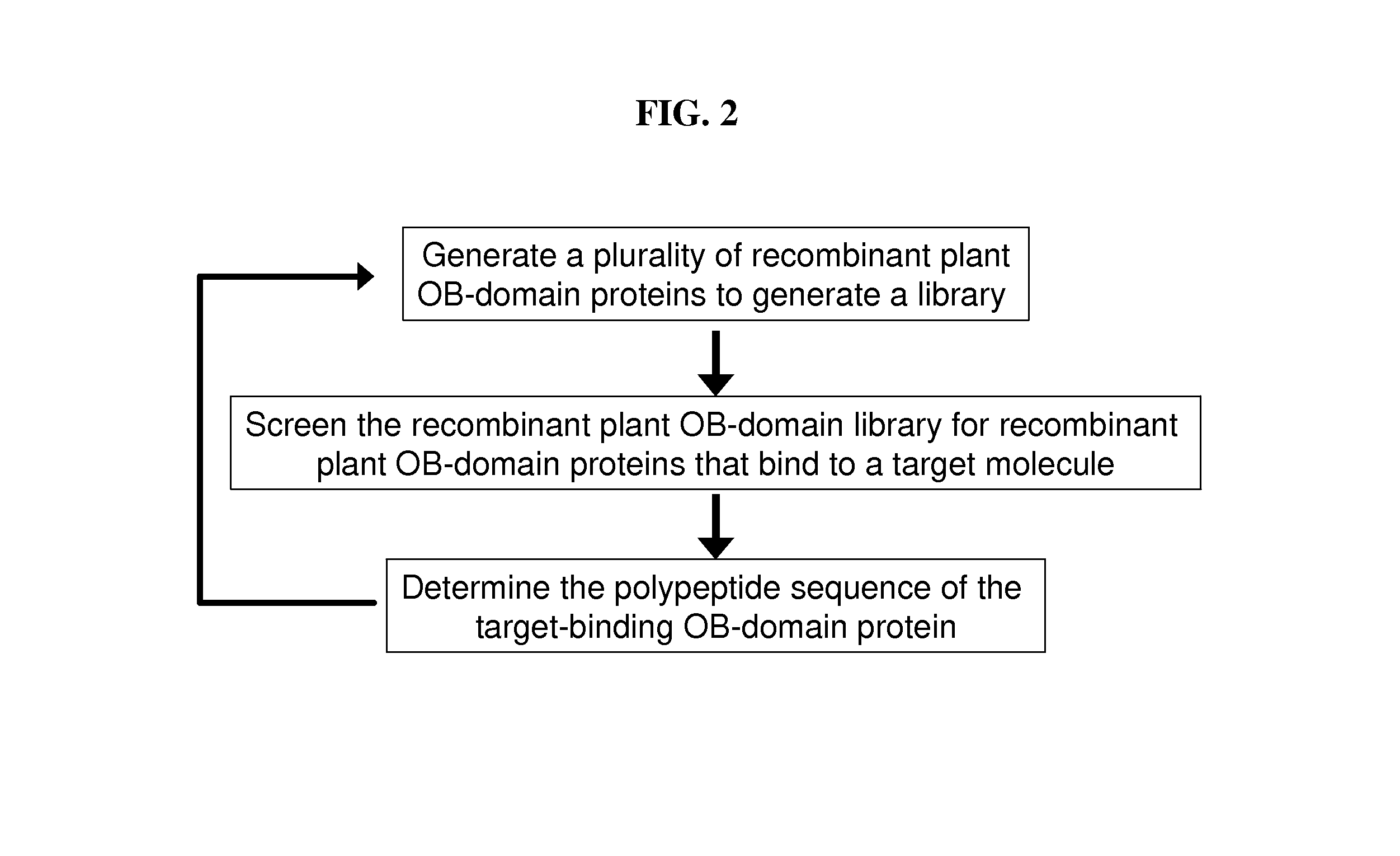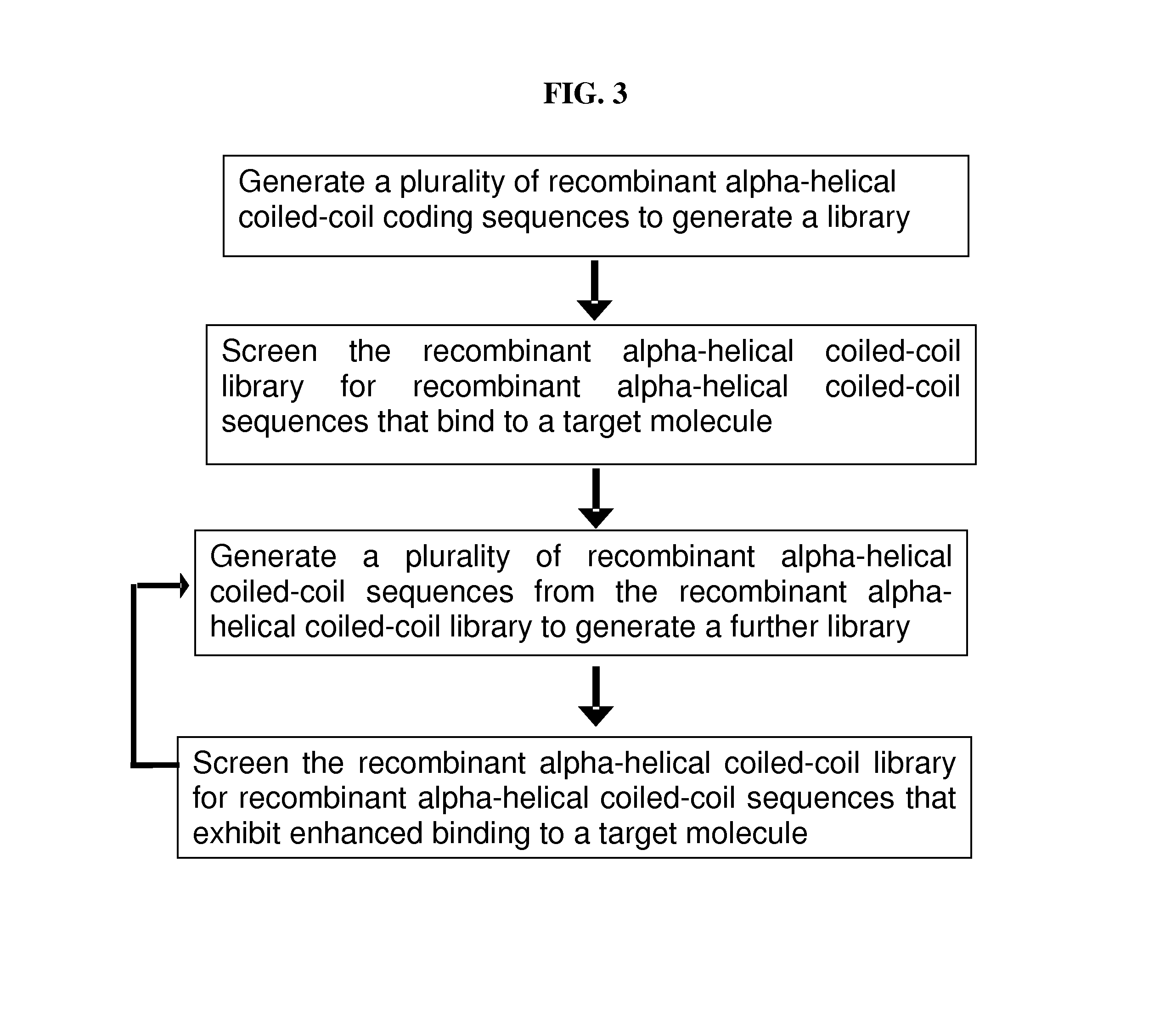Designer bioactive proteins
a bioactive protein and design technology, applied in the field of molecular biology, can solve the problems of limited use of other binding proteins, such as lectins, difficult manipulation of binding properties, and high production costs, and achieve the effects of increasing yield, enhancing oil content, and enhancing oil composition
- Summary
- Abstract
- Description
- Claims
- Application Information
AI Technical Summary
Benefits of technology
Problems solved by technology
Method used
Image
Examples
example 1
Production of a Recombinant Plant Lipocalin
[0164]The coding region for a plant lipocalin domain is identified by comparison to a domain such as those provided in SEQ ID NOs: 3, 6 and 9. Such a comparison may be by primary structure or may employ a program that predicts secondary structure. The plant lipocalin domain is then subject to mutagenesis to produce a plurality of recombinant plant lipocalin sequences. These sequences are then used to generate a library such as a phage display library. The library is screened for sequences that bind to a target molecule. In the case of phage display, the phages providing the displayed recombinant lipocalins are selected for binding to the target molecules thereby enabling the bound phage to be isolated and the recombinant anticalin coding sequences identified.
[0165]Anticalin sequences that are found to bind the target molecule may be further subjected to iterative rounds of random or site directed mutagenesis followed by screening for bindin...
example 2
Production of Target Molecule-Binding Recombinant Plant OB-Domain Proteins
[0166]The coding region for a plant OB-domain is identified by comparison to an OB-domain protein such as SEQ ID NO: 17 or 19. Such a comparison may be by primary structure or may employ a program that predicts secondary structure. The plant OB-domain protein is synthesized under conditions where amino acids are randomized at selected amino acid positions. These proteins are pooled into a library. The library is screened for proteins that bind to an immobilized target molecule. For example, the library may be screened using a proteins microarray to isolate recombinant OB-domain proteins that bind to a plurality of different target molecules (see, e.g., Cinier et al., 2009). The polypeptide sequences of proteins binding to targets of interest are determined by mass spectroscopy.
[0167]Recombinant OB-domain proteins that are found to bind to a target molecule may be further subjected to iterative rounds of select...
example 3
Function of an Alpha-Helix-Forming Polypeptide in a Plant
[0168]Recombinant polypeptides have been found to form a central coil of associated alpha-helices connected by linker loops, in a parallel or an anti-parallel format (e.g. EP 2161278A1; WO2010066740). This three-dimensional “scaffold” structure provides the polypeptide with functional features including thermodynamic stability and flexibility for engineering the sequence encoding the proteinaceous scaffold to further allow for binding of one or more specific molecular target(s). For instance, the coding sequence for an alpha-helix coiled-coil forming polypeptide may be engineered in a linker region to comprise a sequence coding for a localization domain and / or a domain with a beneficial function in a plant. Such functions may include the ability to kill or prevent growth, replication, differentiation, or pathogenesis of an organism that can cause disease in, be a pest of, or otherwise affect (e.g. reduce) the yield of a crop p...
PUM
| Property | Measurement | Unit |
|---|---|---|
| Electrical resistance | aaaaa | aaaaa |
| Sterile | aaaaa | aaaaa |
| Herbicidal properties | aaaaa | aaaaa |
Abstract
Description
Claims
Application Information
 Login to View More
Login to View More - R&D
- Intellectual Property
- Life Sciences
- Materials
- Tech Scout
- Unparalleled Data Quality
- Higher Quality Content
- 60% Fewer Hallucinations
Browse by: Latest US Patents, China's latest patents, Technical Efficacy Thesaurus, Application Domain, Technology Topic, Popular Technical Reports.
© 2025 PatSnap. All rights reserved.Legal|Privacy policy|Modern Slavery Act Transparency Statement|Sitemap|About US| Contact US: help@patsnap.com



